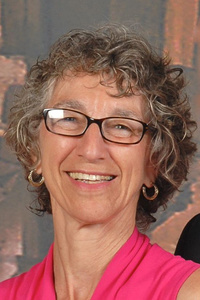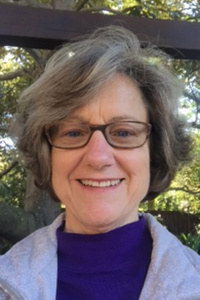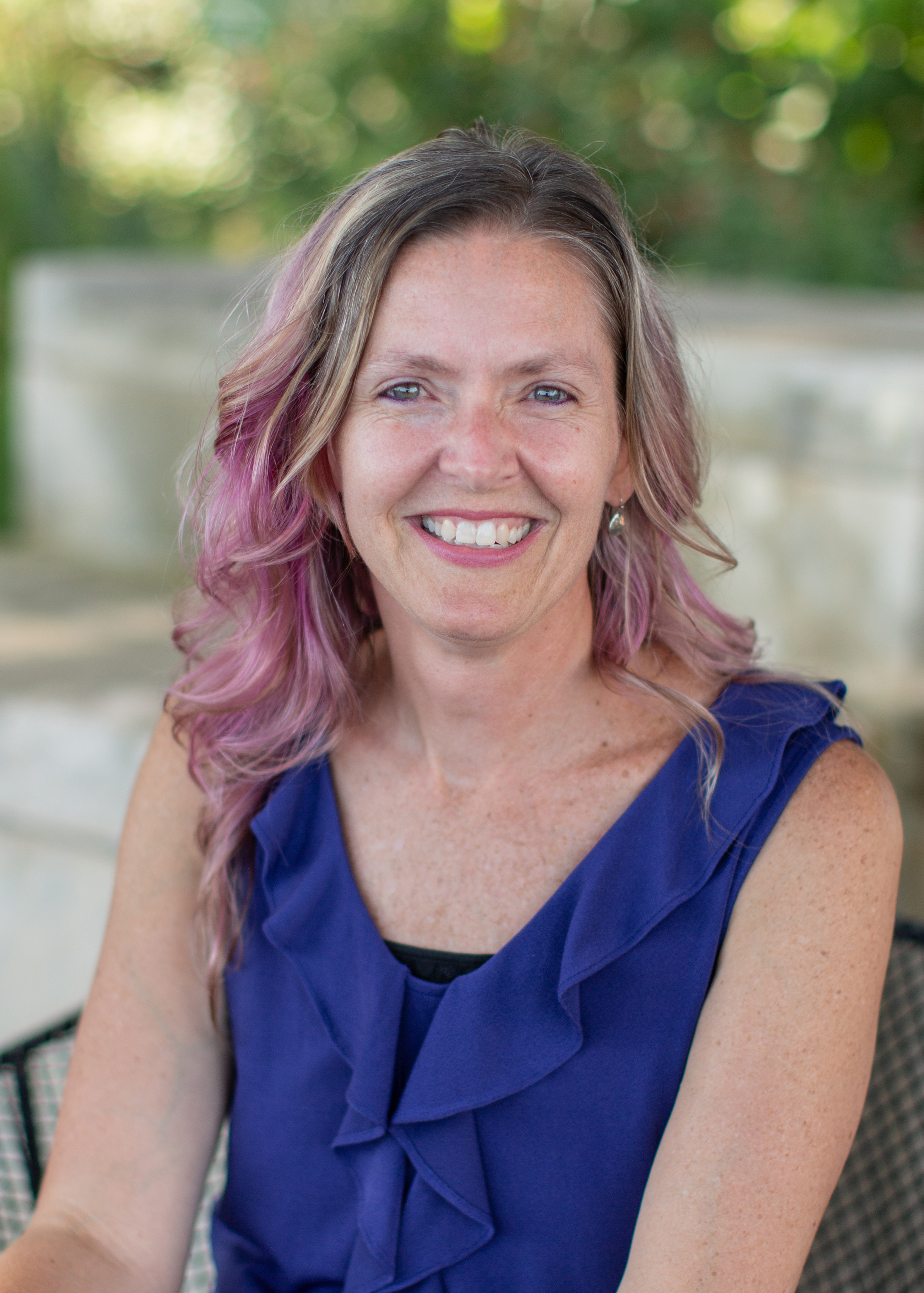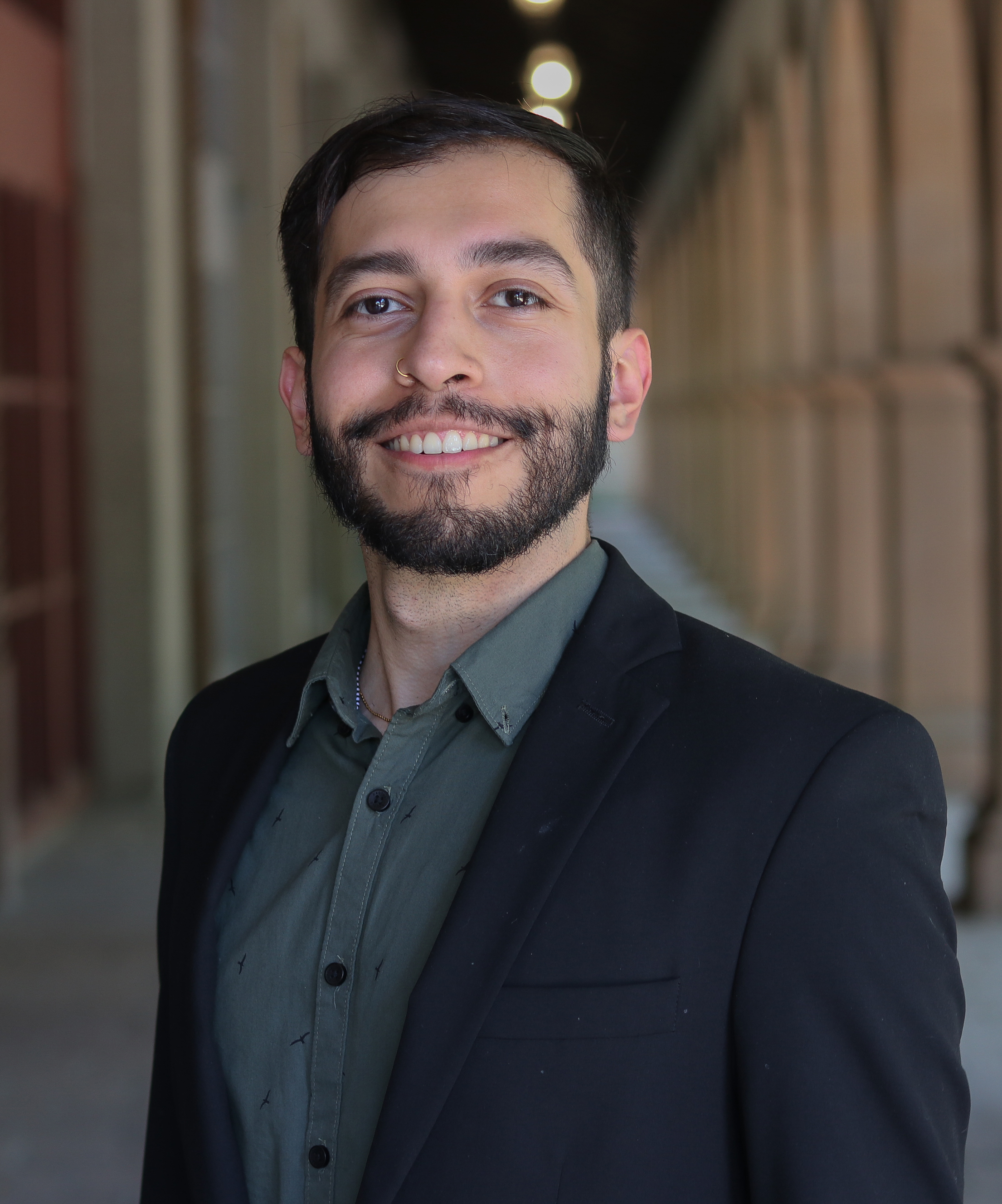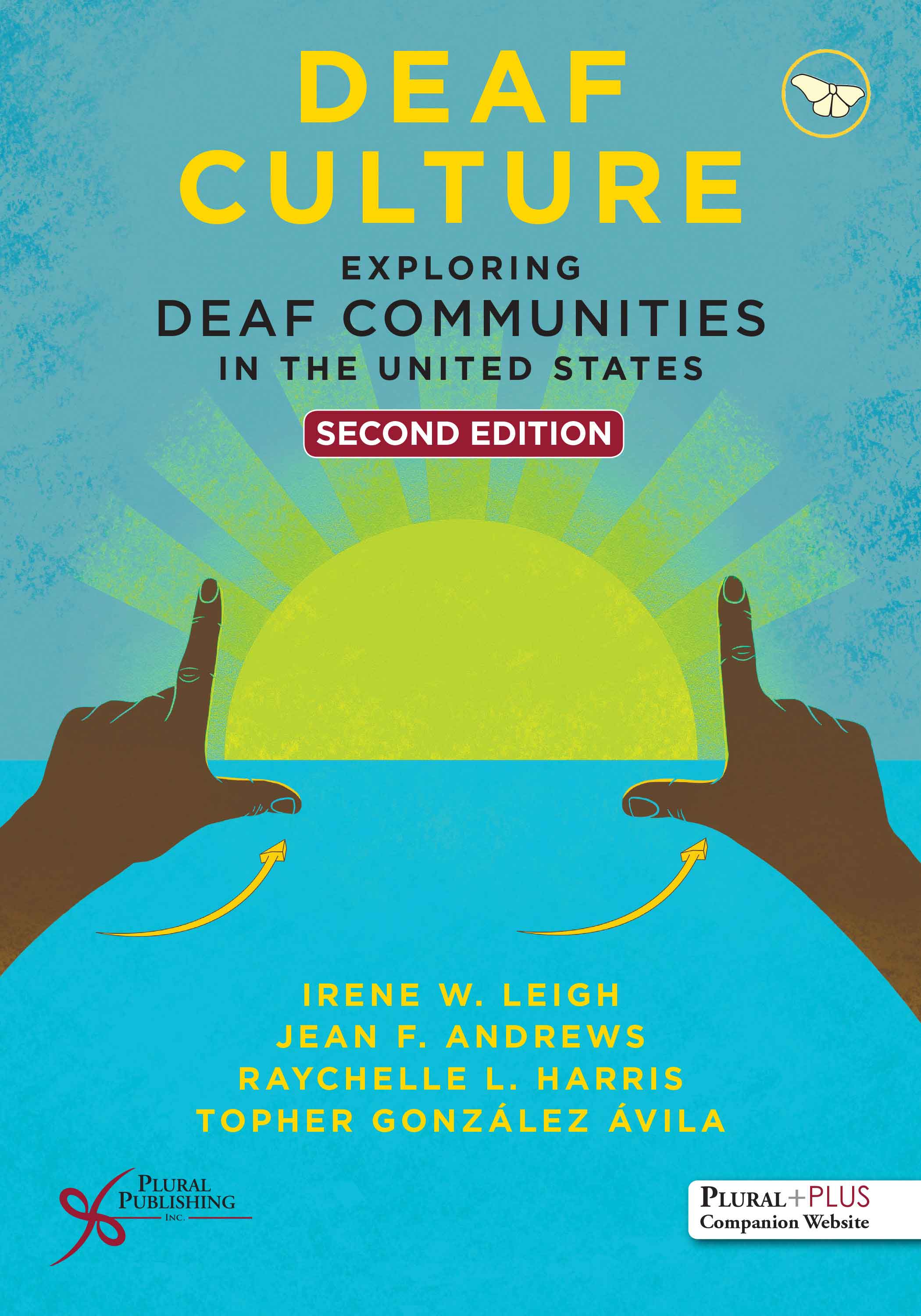
Deaf Culture: Exploring Deaf Communities in the United States
Second Edition
Irene W. Leigh, Jean F. Andrews, Raychelle L. Harris, Topher González Ávila
Details: 384 pages, B&W, Softcover, 7" x 10"
ISBN13: 978-1-63550-173-5
© 2022 | Available
For Instructors
Purchase
A contemporary and vibrant Deaf culture is found within Deaf communities, including Deaf Persons of Color and those who are DeafDisabled and DeafBlind. Taking a more people-centered view, the second edition of Deaf Culture: Exploring Deaf Communities in the United States critically examines how Deaf culture fits into education, psychology, cultural studies, technology, and the arts. With the acknowledgment of signed languages all over the world as bonafide languages, the perception of Deaf people has evolved into the recognition and acceptance of a vibrant Deaf culture centered around the use of signed languages and the communities of Deaf peoples. Written by Deaf and hearing authors with extensive teaching experience and immersion in Deaf cultures and signed languages, Deaf Culture fills a niche as an introductory textbook that is more inclusive, accessible, and straightforward for those beginning their studies of the Deaf-World.
New to the Second Edition
- A new co-author, Topher González Ávila, MA
- Two new chapters!
- Chapter 7 “Deaf Communities Within the Deaf Community” highlights the complex variations within this community
- Chapter 10 “Deaf People and the Legal System: Education, Employment, and Criminal Justice” underscores linguistic and access rights
- The remaining chapters have been significantly updated to reflect current trends and new information, such as:
- Advances in technology created by Deaf people that influence and enhance their lives within various national and international societies
- Greater emphasis on different perspectives within Deaf culture
- Information about legal issues and recent political action by Deaf people
- New information on how Deaf people are making breakthroughs in the entertainment industry
- Addition of new vignettes, examples, pictures, and perspectives to enhance content interest for readers and facilitate instructor teaching
- Introduction of theories explained in a practical and reader-friendly manner to ensure understanding
- An updated introduction to potential opportunities for professional and informal involvement in ASL/Deaf culture with children, youth, and adults
Key Features
- Strong focus on including different communities within Deaf cultures
- Thought-provoking questions, illustrative vignettes, and examples
- Theories introduced and explained in a practical and reader-friendly manner
- PluralPlus companion website with a test bank and lecture slides for instructors
Instructor test bank available on the Respondus Test Bank Network.
Reviews of the First Edition
"This book provides up-to-date information about the Deaf Community in a "reader-friendly" fashion. It covers many topics that are important to know about when trying to gain an understanding of Deaf Culture."
—Rebecca Swenson, MA, Lecturer and Coordinator of Deaf Studies Minor, State University of New York at New Paltz
"I believe that the authors have excelled at making this text an accessible reference for individuals, such as myself, who are beginning their studies about Deaf culture. The information is presented in an objective way, and effortlessly combines research and theory with real-world stories, photographs, and reflective questions. This combination helped me internalize the concepts the authors discuss. The text also effectively highlights Deaf culture in many contexts, such as fine arts, education, technology, the workplace, and psychology. As a school psychology student, I appreciated the depth in which the authors discuss Deaf education and learning. They provide strategies for increasing learning in a classroom for Deaf students, such as good lighting or arranging desks in a semicircle, and I was also inspired to think about my own educational experiences. As an aspiring clinician, I can use this information to educate my clients about the importance of equal access in the classroom and how to use different learning and teaching strategies to achieve it."
—Yasmine R. Jassal, in American Annals of the Deaf (January 2017)
"Deaf Culture: Exploring Deaf Communities in the United States is a comprehensive book that discusses the challenges and successes of persons who are Deaf in the United States. This review of the history of the language and culture of Deaf persons as well as contemporary use of technology that benefits both persons who are Deaf and others in society focuses on individuals and innovations that have supported the success of individuals within Deaf culture."
—Martha J. Cook, PhD, CCC-SLP, Assistant Professor, Department of Communication Disorders, Southeast Missouri State University
"This text provides a comprehensive view of the Deaf culture and community. The authors take readers on a journey through the lives of Deaf individuals from every perspective. They leave no topic out. It's refreshing to have a current reference on the topic that encompasses so much material and presents it in an educated, unbiased manner."
—Megan Gross, MSEd, NIC, Department of Speech Pathology and Audiology, Miami University
"This book offers a unique and fresh perspective on the exploration of Deaf culture and the development of one's Deaf identity. I feel that the perspective offered regarding the psychological aspects of Deaf identity, particularly when compared to other cultural minorities, is very beneficial to understanding Deaf culture."
—Dana L. Ulmer, AuD, CCC-A, Clinical Assistant Professor of Audiology, University of Florida
"This manuscript presents a thorough, careful consideration of issues surrounding the Deaf world. It will serve as an excellent text for students with no background in Deaf history, language, and culture."
—Steven Surrency, PhD, Communication Sciences and Disorders, University of South Florida
"The text is well-designed and easy-to-read. There are good illustrations, images, tables, thought-provoking questions, and personal stories. . . . And although multiple authors contributed to the writing, it reads as if from one voice, which makes it flow very nicely. The language is neither lofty or condescending, making it a good read for readers of all levels of education. The authors have done a nice job of demystifying the Deaf culture throughout the text. The selection of online additional resources makes it a good choice for instructors in Deaf Studies, Deaf Education, Interpretation, American Sign Language, Psychology, Audiology, and other related fields. The extra student resources provided would be an excellent guide for students throughout their courses, either as required or recommended reading and activities. The authors outstandingly directed the text toward their intended audience of Deaf Studies/Education and American Sign Language students. However, to gain a new perspective, it would be a good read for audiologists and other professionals who may automatically consider having hearing loss as a disabling condition. In this manner, they may gain new information to improve communication and counseling during professional interactions with Deaf persons."
—Ashley Dockens, Aud, PhD, in Ear & Hearing (2017)
“The authors have made significant improvements in the second version by expanding on the perspectives and experiences within Deaf communities. Readers will learn that Deaf culture is not monolithic… By collaborating with the fourth author, González Ávila, who is a Latinx Queer Deaf man, the original authors shifted from a dominant perspective, which is white, sighted, ablebodied, and cisgender, to views that are more reflective of diverse communities including BIPOC (Black, Indigenous, People of Color), LGBTQA (Lesbian, Gay, Bisexual, Transgender, Queer/Questioning, and Asexual), DeafBlind, and Deaf Disabled individuals. Several of the original terminologies were revised or added to be respectful and inclusive of diverse communities. For example, the authors replaced the term Latino with Latinx to represent all ranges of gender identities within the Latinx community. The authors also expanded from Native Americans to Indigenous and Native communities, which are the preferred terminology for these communities.
…This second edition of Deaf Culture: Exploring Deaf Communities in the United States is full of resources for individuals interested to learn about the historical and contemporary issues and trends on Deaf culture and Deaf communities. The textbook uses an engaging and conversational style throughout. It includes text boxes with questions and activities for the readers to pause and reflect upon topics discussed in the chapters. The book is visually interesting, as it incorporates images of diverse Deaf individuals and cultural artifacts. Text boxes with real-life vignettes appear throughout the book to provide glimpses of the vibrant Deaf community. Specific concepts and theories related to the Deaf culture are displayed through diagrams and illustrations. Secondary and postsecondary students studying Deaf education, Deaf studies, sign language, linguistics, audiology, speech-language pathology, counseling, psychology, or social work will find this book practical. Hearing families with deaf children will greatly benefit from reading this book to learn about their Deaf child’s culture and what the Deaf community has to offer.
I appreciate the authors’ considerations and efforts to expand the inclusion of diverse perspectives within the Deaf community in the second version. It is timely, as it reflects the current conversations on the value of equity, diversity, and inclusion on all levels. The authors did a tremendous job in portraying the ever-evolving Deaf culture and Deaf community and its unique contribution to the larger society as a vibrant, interesting, and complex community from authentic perspectives.”
–Julie Mitchiner, PhD, from Sign Language Studies (Spring 2022)
Preface
Acknowledgments
About the Authors
Part I. Deaf Culture: Yesterday and Today
Chapter 1. Deaf Community: Past and Present
Introduction
The Deaf Community and Its Members
Deaf Children of Culturally Deaf Parents
Deaf Children of Hearing Parents
Hearing Members in Deaf Families
Hard-of-Hearing Individuals
Late-Deafened Individuals
Deaf Blind Individuals
Multiple Communities
Demographics
Historical Highlights
Contemporary Descriptions
Deafhood
Deaf Gain
Deaf Ethnicity
People of the Eye
Deaf Epistemologies
Conclusions
References
Chapter 2. Causes of Being Deaf and the Auditory Field
Determining One’s Hearing Level
Audiologists and Audiograms
Hearing Labels
What Causes Changes in Hearing Levels?
Genetic Causes
Acquired
Conductive
Sensorineural
History of Auditory Technology
Current Auditory Innovations and Rehabilitation
Hearing Level Screening
Hearing Aids
Cochlear Implants
The Cochlear Implant Controversy
Inspiration Porn
Genetic Engineering
Genetic Controversy
Conclusions
References
Part II. Signed Languages and Learning
Chapter 3. American Sign Language
Background of ASL and Other Sign Languages
Indigenous Communities and “Hand-Talk”
African American Communities and BASL
European Communities
Euro-American Communities
Home Signs and Gestures
Village Sign Languages
How Sign Languages Are Spread
International Sign (IS) and Signed Languages Used Globally
ASL and English: Features, Content, and Structure
ASL Content
Structure
The Manual Alphabet
ASL Learners and Strategies
Dialects and Other Forms of Signed Communication
Attitudes: Linguistic Imperialism
Conclusions
References
Chapter 4. How Deaf Children Think, Learn, and Read
Culture, Learning, and Intelligence
Culture and Language
IQ Tests
Thought and Language
Cognitive Abilities
Cognition Shaped by Culture
Incidental Learning
Joint Attention
Visual Attention and Peripheral Vision
Visual Imagery and Spatial Memory
Reasoning
Metacognitive Abilities
Theory of Mind
Executive Function
Language Pathways
Early Gestures, Family Communication, and Play
Language Milestones
The Brain, Multilingualism, and Sign Languages
Theories and Strategies
Literacy Learning
Importance
Developmental Pathways
Deficit Models
Asset Model
Conclusions
References
Chapter 5. Deaf Education, Deaf Culture, and Multiculturalism
Deaf Culture and Multiculturalism
Factors Impacting Schooling
Age of Onset and Parental Hearing Status
Multilingualism, Multiculturalism, and Schooling
Lesbian, Gay, Bisexual, and Transgender (LGBT) Deaf Students
Deaf Disabled Students
Communication and Language Approaches
History of Deaf Education
Bilingual and Multilingual Approaches
Blended Approaches
Monolingual Listening and Spoken Language (LSL) Approaches
Communication Approaches and DeafDisabled Students
School Settings
Center Schools
Private Oral Schools
Day Schools
Inclusion
Mainstream, Self-Contained Resource Room
Coenrollment
Charter Schools and Home Schools
Technology, DeafSpace, and Classroom Acoustics
Educational Programming
Early Childhood (EC) Levels (Birth to 5 Years)
Curriculum and Outcomes
Challenges in School
K to 12th-Grade Levels (5 to 22 Years)
Curriculum and Outcomes
Transition and Postsecondary Educational Opportunities
Curriculum and Outcomes
Postsecondary Challenges
Preparation of Teachers and Educational Interpreters
Teacher-Training
Educational Interpreter Training
Challenges for Teachers and Interpreters
Conclusions
References
Part III. Deaf Lives, Technology, Arts, and Career Opportunities
Chapter 6. Deaf Identities
Deaf Identities
Categories of Deaf Identities
Disability Framework
Social Identity Theory
Racial Identity Development Framework
Deaf Identity Development Framework
Acculturation Model
The Narrative Approach
Intersectionality
Race/Ethnicity
Sexual Orientation
Disability
Conclusions
References
Chapter 7. Deaf Communities Within the Deaf Community
References
Chapter 8. Navigating Lives
Introduction
Forms of Discrimination
Resilience
The Role of Relationships in Strengthening Resilience
The World of Work
Health Issues
Mental Health Issues
Domestic Violence
Criminal Justice Issues
Aging Issues
Conclusions
References
Chapter 9. Technology and Accessibility
History: Foundations for Access
Deaf Community and Access
Captions
Telephones
Alerting Devices or Systems
Wake-Up Devices
Baby Alerting Devices
Residential Security and Alarm Systems
Emergency Announcements
Assistive Systems and Devices
Innovative Technology
Conclusions
References
Chapter 10. Deaf People and the Legal System: Education, Employment,and Criminal Justice
Education Laws
Laws in Early Childhood
Early Hearing Detection and Intervention (EDHI) Act
Individuals With Disabilities Education Act (IDEA) (Part C)
Laws With School-Age Deaf Children
IDEA (Part B)
IDEA (Part A)
American With Disabilities Act (ADA)
Section 504 of the Rehabilitation Act of 1973
Every Student Succeeds Act (ESSA)
Laws in Foster Care Placements
IDEA, ADA, and Section 504
Laws in Juvenile Justice Facility Placements
IDEA, ADA, and Section 504
Employment
Social Security Act
Rehabilitation Act of 1973
Americans With Disabilities Act (ADA)
Higher Education
ADA and 504 Protections
Justice System
Family, Education, and Language Factors
Section 504 and ADA Protections
The Bill of Rights and the 14th Amendment
Victims of Crimes
Prevalence and Types of Crimes
Homicide
Sexual Offending Crimes
The Criminal Justice Process
Barriers at the Arrest
Booking, Medical/Psychological Intake, and Orientation
Barriers at Trial
Barriers in Jail or Prison
Barriers in Probation and Parole
Conclusions
References
Chapter 11. Arts, Literature, and Media
Arts
Visual and Tactile Arts
De’VIA
Performing Arts
Deaf Theater
Deaf in Television and Movies
Deaf in Game and Reality Shows
Deaf Music and Dancing
Literature
Literature in the Deaf Community
ASL Literature
Deaf Literature: English
Online ASL and Deaf Literature
Media
Deaf Images: Digital Arts and Photography
Deaf Motion: Cinema and Film
Conclusion
References
Chapter 12. Advocating and Career Opportunities
Introduction
Deaf-Hearing Collaboration
Career Possibilities
ASL Interpreters
Teachers
Early Childhood Educators
Audiologists
Speech and Language Therapists
Vocational Rehabilitation Counselors and Job Coaches
Mental Health Service Providers
Hotline Volunteer
Clinical Mental Health Counselor
School Counselor
Social Work
Clinical Psychology
Emergency Medical Technicians
Other Career Possibilities
Conclusions
References
Chapter 13. Final Thoughts on Deaf Culture and Its Future
References
Index
Deaf Culture: Exploring Deaf Communities in the United States, Second Edition comes with access to supplementary student and instructor materials on a PluralPlus companion website.
STUDENTS:
To access the student materials, you must register on the companion website and log in using the access code printed on the inside front cover of your book.
INSTRUCTORS:
To access the instructor materials, you must contact Plural Publishing, Inc. to be verified as an instructor and receive your access code.
Email: instructormaterials@pluralpublishing.com
Tel: 866-758-7251 (toll free) or 858-492-1555
*Note for students: If you have purchased this textbook used or have rented it, your access code will not work if it was already redeemed by the original buyer of the book. Plural Publishing does not offer replacement access codes for used or rented textbooks.
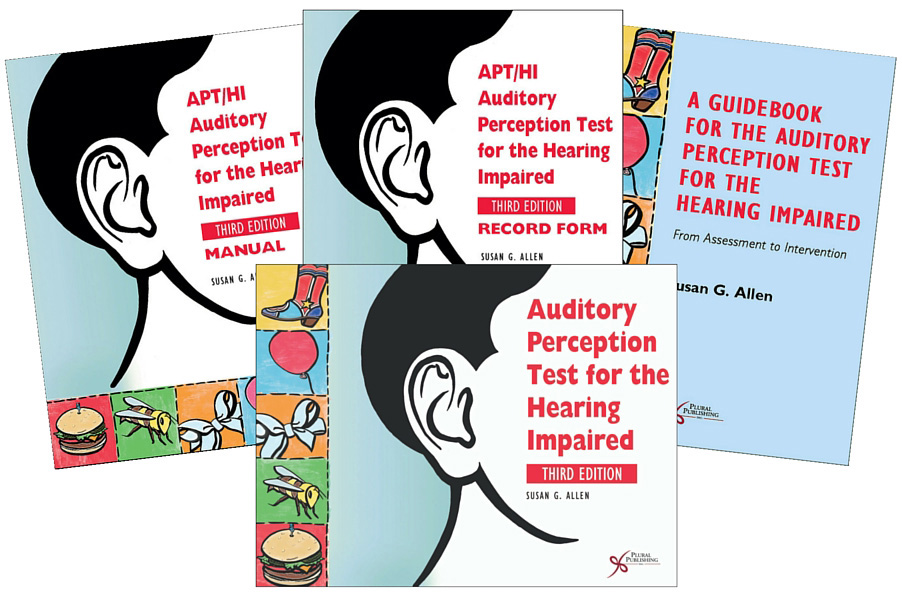
Auditory Perception Test for the Hearing Impaired (APT/HI)
Third Edition
Susan G. Allen
Details: Full Color, Spiral-Bound Test Book, 8.5" x 11", plus Guidebook and Companion website with supplementary materials
ISBN13: 978-1-59756-590-5
© 2016 | Available
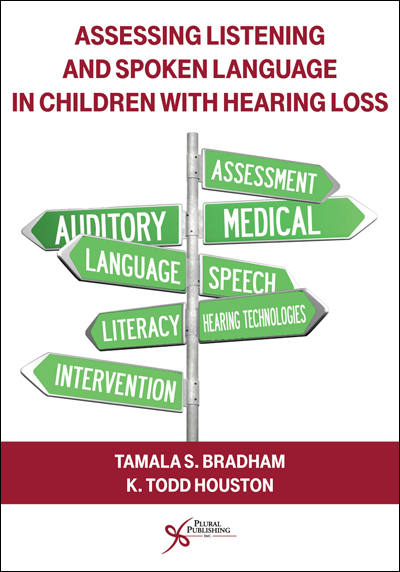
Assessing Listening and Spoken Language in Children with Hearing Loss
First Edition
Tamala S. Bradham, K. Todd Houston
Details: 496 pages, B&W, Softcover, 7" x 10"
ISBN13: 978-1-59756-576-9
© 2015 | Available
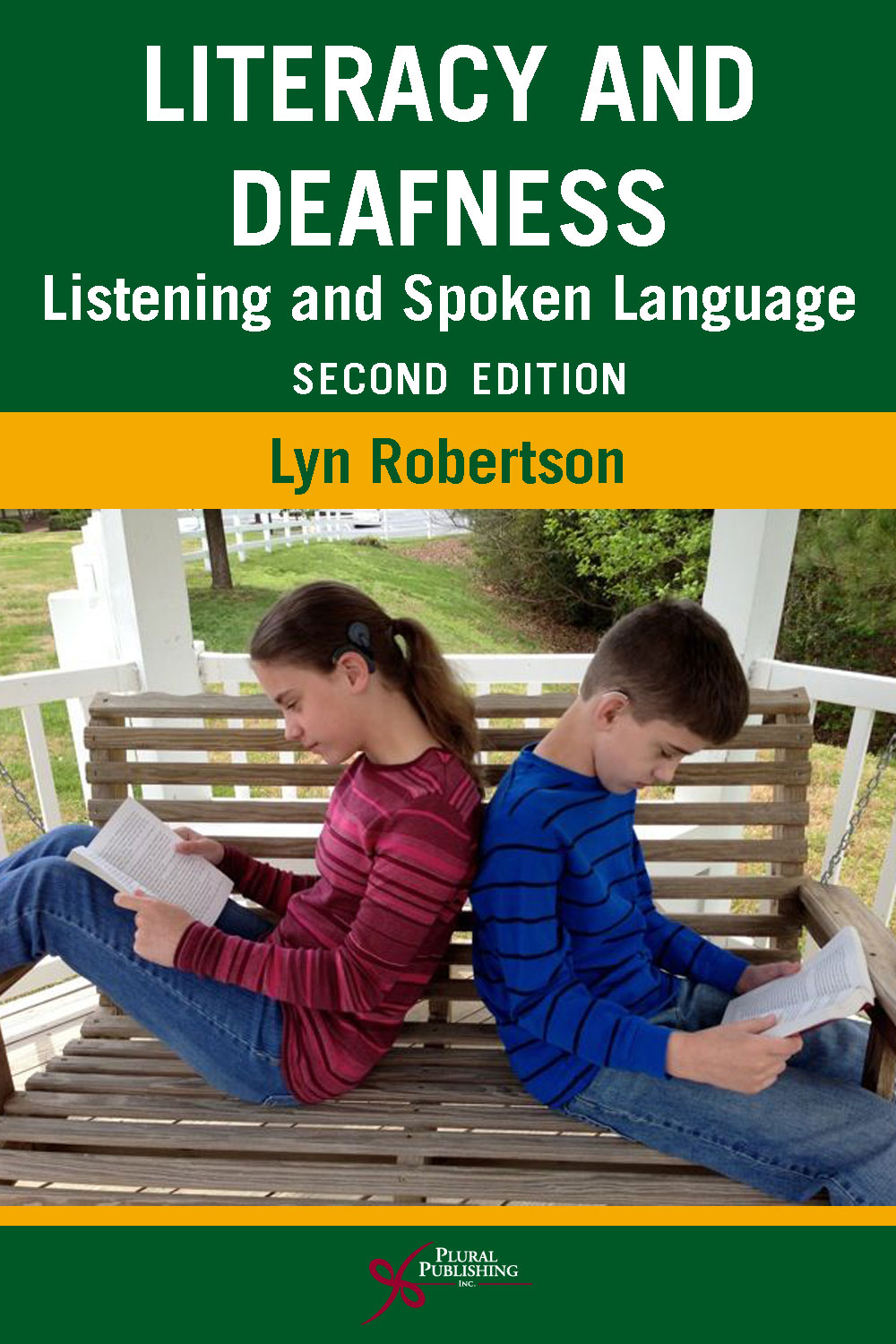
Literacy and Deafness: Listening and Spoken Language
Second Edition
Lyn Robertson
Details: 400 pages, B&W, Softcover, 6" x 9"
ISBN13: 978-1-59756-557-8
© 2014 | Available
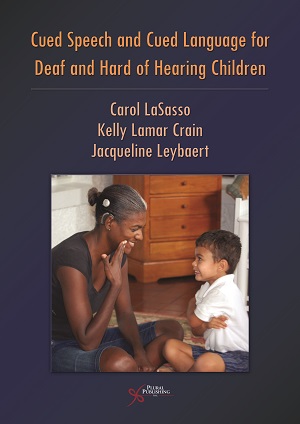
Cued Speech and Cued Language for Deaf and Hard of Hearing Children
First Edition
Carol LaSasso, Kelly Lamar Crain, Jacqueline Leybaert
Details: 606 pages, B&W, Softcover, 7" x 10"
ISBN13: 978-1-59756-334-5
© 2010 | Available
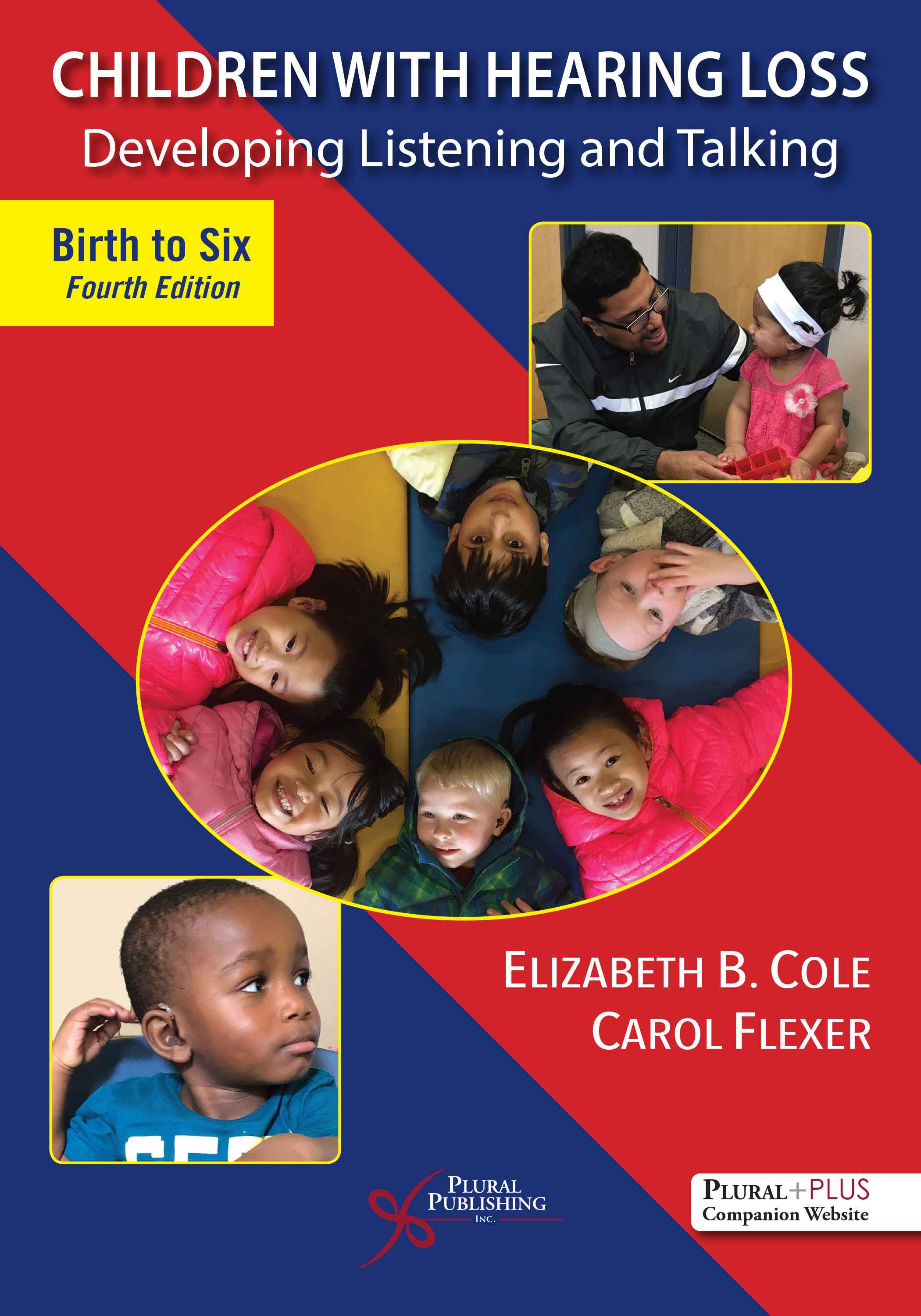
Children with Hearing Loss: Developing Listening and Talking, Birth to Six
Fourth Edition
Elizabeth B. Cole, Carol Flexer
Details: 411 pages, B&W, Softcover, 7" x 10"
ISBN13: 978-1-63550-154-4
© 2020 | Available
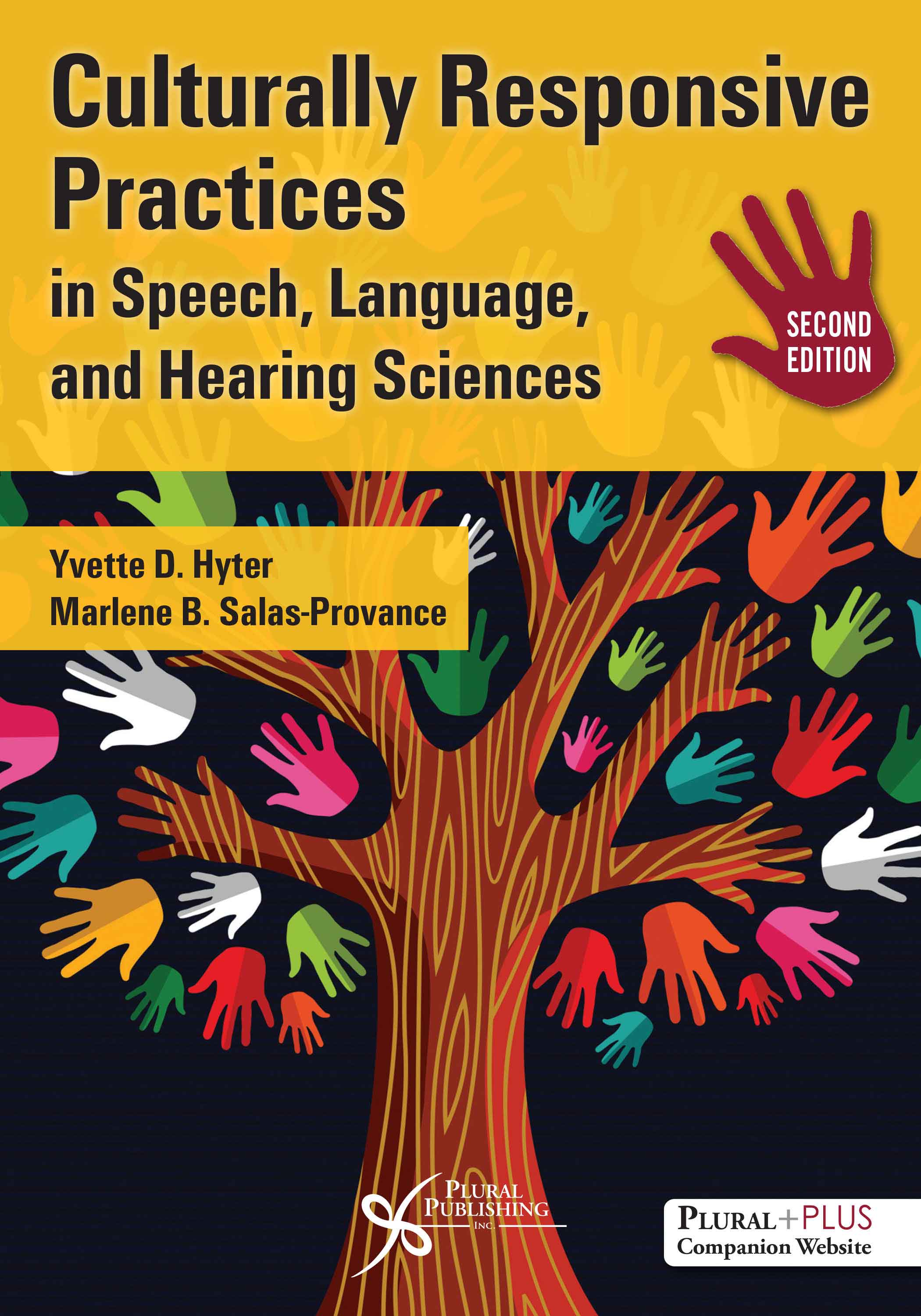
Culturally Responsive Practices in Speech, Language, and Hearing Sciences.
Second Edition
Yvette D. Hyter, Marlene B. Salas-Provance
Details: 448 pages, B&W, Softcover, 7" x 10"
ISBN13: 978-1-63550-650-1
© 2023 | Available
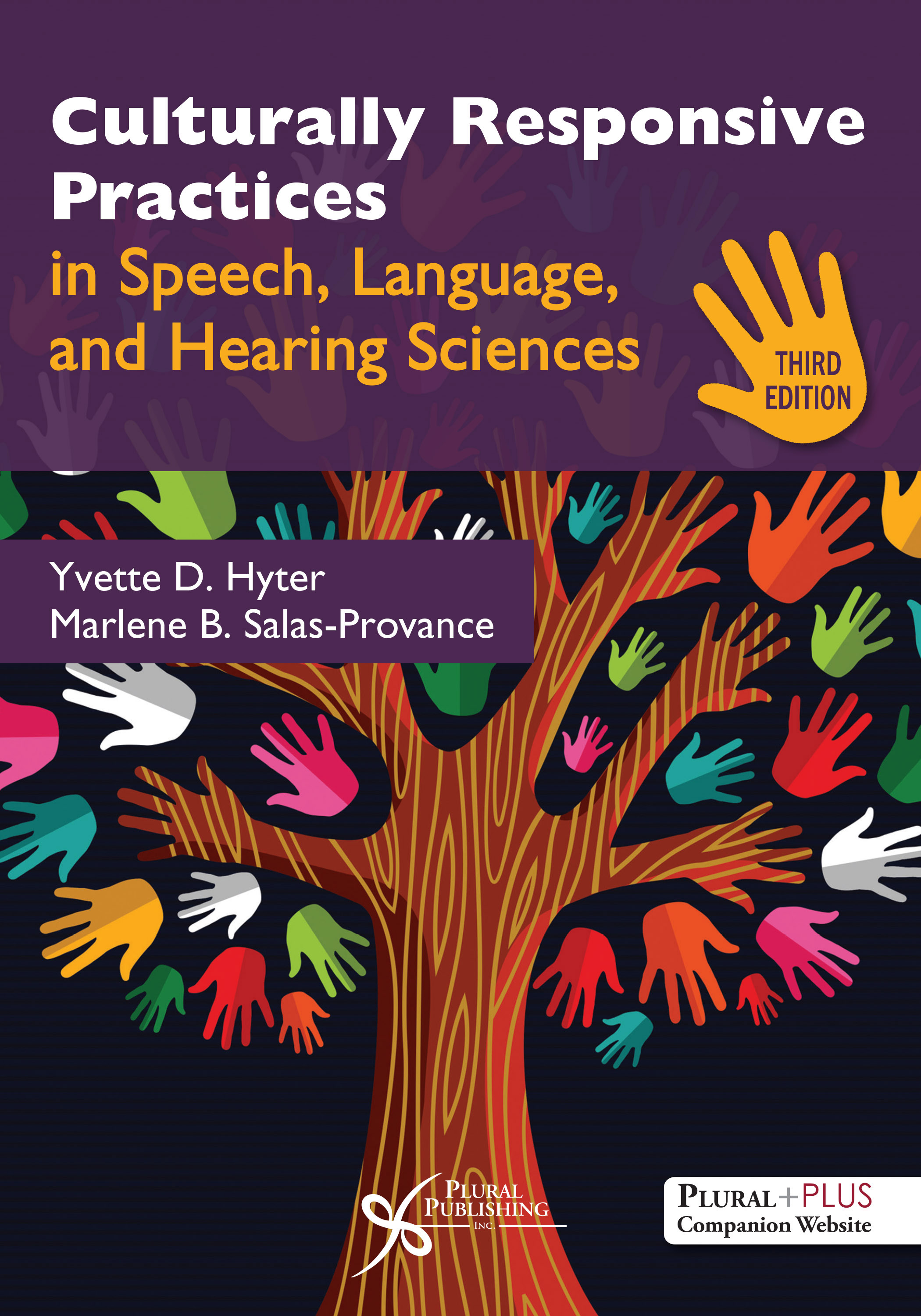
Culturally Responsive Practices in Speech, Language, and Hearing Sciences
Third Edition
Yvette D. Hyter, Marlene B. Salas-Provance
Details: 431 pages, B&W, Softcover, 7" x 10"
ISBN13: 978-1-63550-733-1
© 2027 | Available

